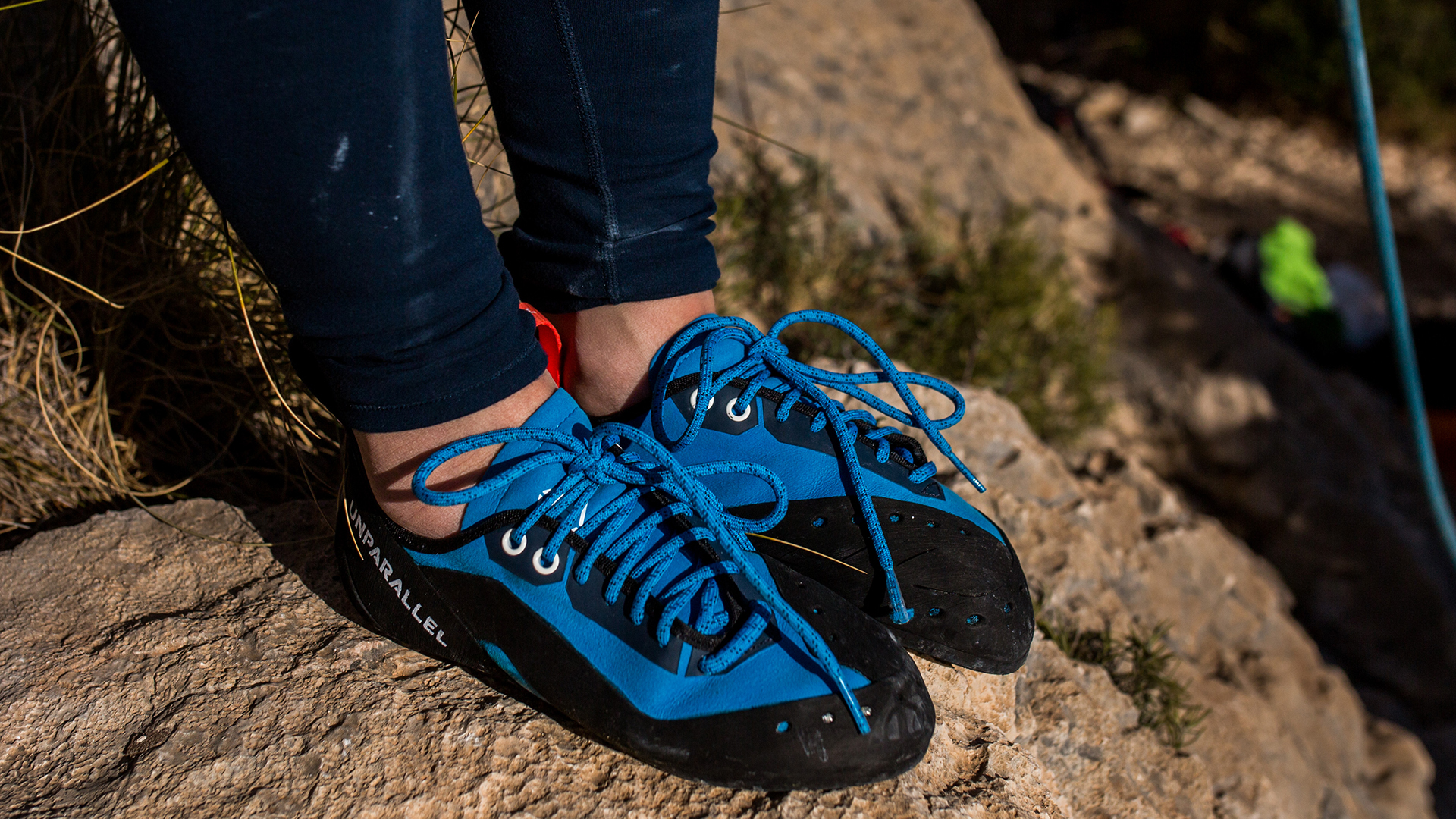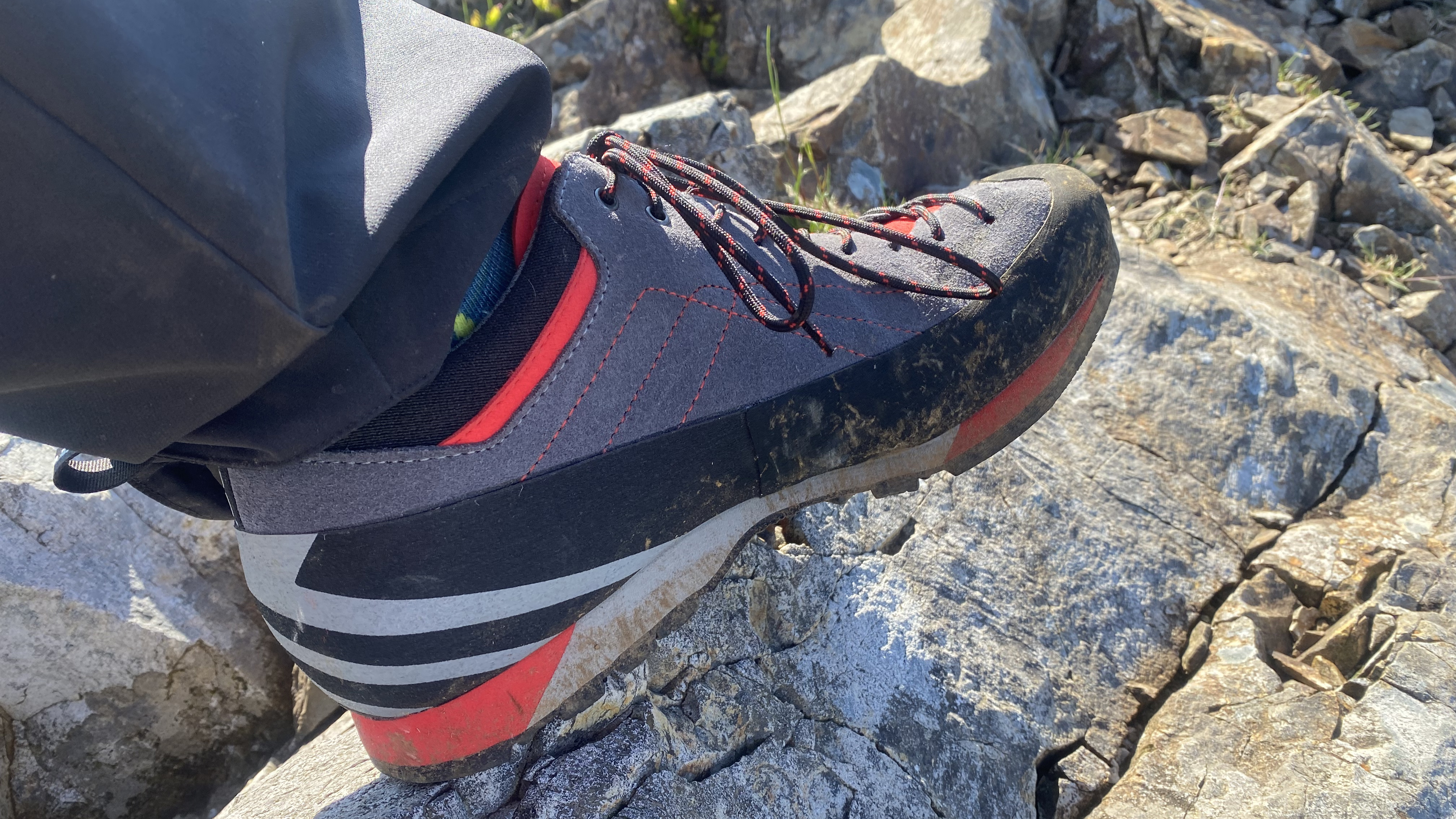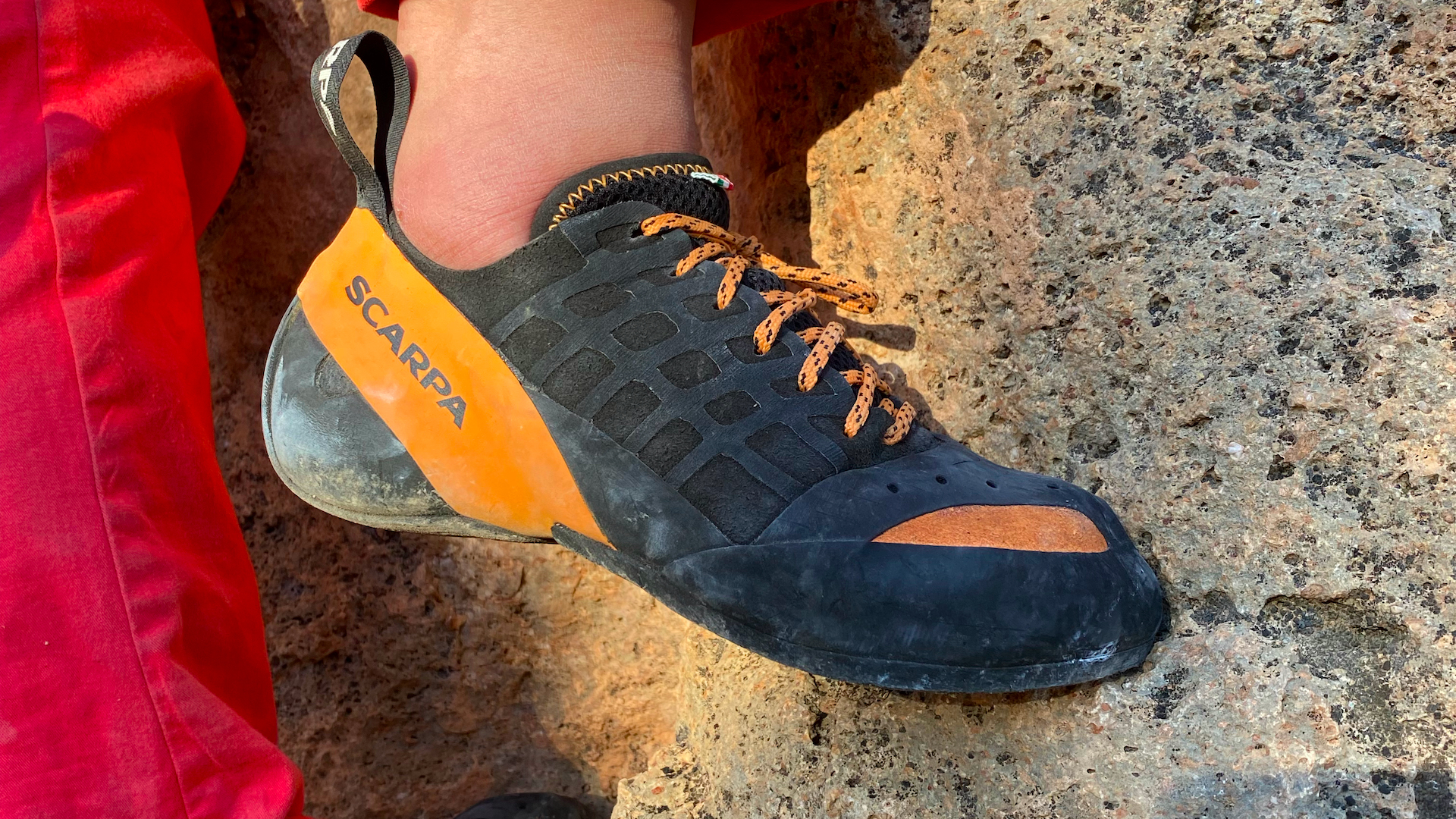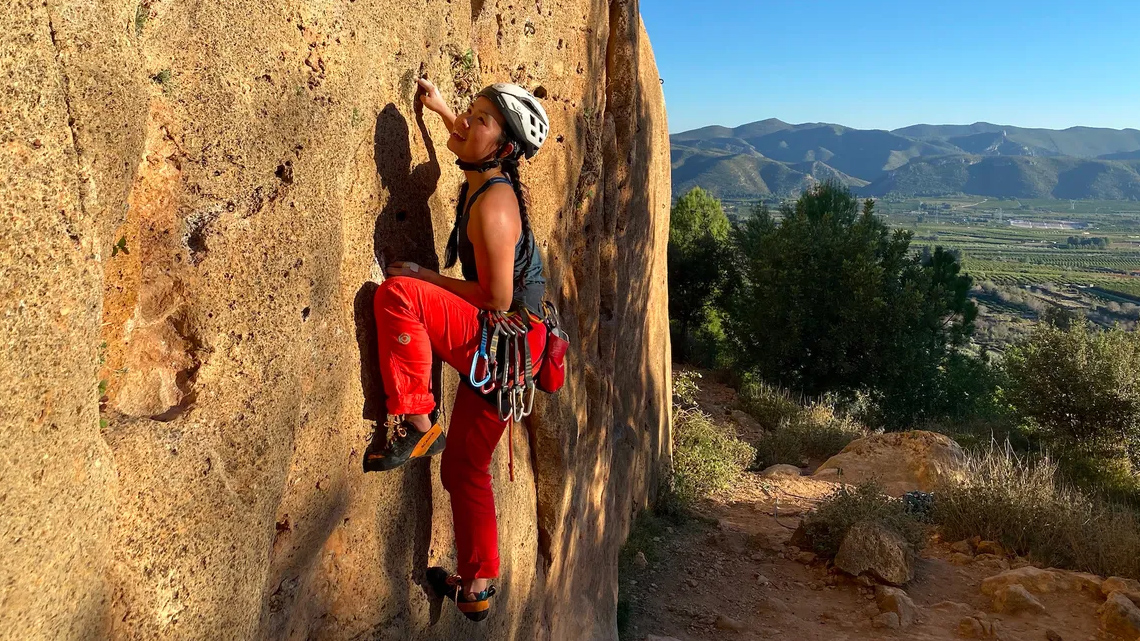
When it comes to choosing climbing shoes, it’s not a decision you want to get wrong. A well-chosen shoe is your ally on the wall – a protective and grippy extension of your own foot that enables you to push up the grades with a smile. An ill-considered choice could be woefully uncomfortable, unsuited to the kind of climbing you’re doing and detract from the overall experience.
With this in mind, we asked one of our climbing and mountaineering experts to reveal how to choose climbing shoes that’ll match your ambitions and climbing style.
How to choose climbing shoes
When choosing climbing shoes, follow these steps:
Consider whether climbing shoes are what you need: it may be that approach shoes would be better suited to your aspirations.
Consider the type of climbing shoes you need: neutral, moderate or aggressive shoes each have different qualities.
Get closure: choose between versatile lace-ups, convenient straps or low profile slip-ons, again based on the kind of climbing you intend to do most.
Size down to get the right fit: it’s likely your climbing shoes will be a smaller size than your other footwear, as you’re looking for a tight fit.
Try at least a few different pairs: every foot is different and climbing shoes come in different shapes to match – try at least a few to find your best fit.
Comfort is key: At the end of the day comfort is the be all and end all. You won’t want to climb in shoes that are painfully uncomfortable.
Remember, your shoes should be comfortable yet tight fitting, your toes should be touching the end (ideally with a slight curl), your heel should also fit snugly and the type of climbing shoe should match the kind of climbing you’ll be doing. You should be able to stand on your toes without the heel being uncomfortable against your Achilles tendon.
Meet the expert
What is a climbing shoe?

A climbing shoe is a type of footwear designed specifically for rock or indoor climbing. They’re intended to fit snugly, matching the shape of the foot, and feature flat, sticky rubber outsoles that provide maximum traction on the wall. Unlike hiking shoes or running shoes, they’re not designed to be comfortable to walk in.
Consider whether climbing shoes are what you need

If you’re racking up a fortune in hire costs at your local bouldering wall, you need climbing shoes. If you're into sport climbing, you need climbing shoes. If you’re looking to seriously push up through the trad grades, you need climbing shoes.
If you’re more of a scrambler or mountaineer looking to add easier climbs into the experience, you’ll probably be more comfortable in a pair of approach shoes. These are designed as a halfway house between hiking shoes and climbing shoes and are suitable for less technical climbs. Some big wall climbers even use them, especially if there’s a lot of aid climbing involved.
Work out what type of climbing shoe you need
There are broadly three types of modern climbing shoe: neutral, moderate and aggressive.
Neutral climbing shoes: These feature a flat profile and are much more comfortable than more aggressive climbing shoes on long-multi-pitch climbs.

Moderate climbing shoes: These have a moderately downturned profile and a thinner sole than neutral shoes. Not quite as comfortable on long routes, they are, nevertheless, a good all-rounder that can be used on pretty much all kinds of climbs.

Aggressive climbing shoes: These have an aggressively downturned profile and a thin sole, which gives them power, precision and sensitivity on difficult routes. They're the least comfortable and the least durable too, but also the highest performing.

The best type of shoes for you will depend on the style and difficulty of the climbing you intend to take on and the length of time you’ll be wearing the shoe.
For example, if you’re looking to do crack climbing, a neutral shoe with a stiffer sole will allow you to effectively jam your foot into cracks. Other reasons you might want a neutral shoe is that they’re more comfortable for extended wear. So, if you’re mostly going to be taking on long, multi-pitch routes or spending long days at the gym, neutral shoes are best. The Black Diamond Momentum is a good beginner choice.
Or, if you’re a newcomer to climbing or haven’t discovered a niche that you prefer, a moderate shoe may make sense, as it’ll be a good all-rounder.
Whereas you’ll want an aggressive pair if you’re taking on really challenging, single-pitch sport climbing routes that involves precise and tiny toe placements.
Get closure
There are generally three types of closure to choose from: laces, strap and slip-on. Each have their own pros and cons, as well as different situations that they excel in.
The most versatile closure type – and therefore a good choice for beginner climbers – is laces. You can bring everything in tight for precision on the crux and then loosen when your feet start to moan, swell up or when it’s time to shuffle off the crag.

A strap closure usually uses Velcro and is a convenient option if you’re going to be taking your shoes on and off repeatedly during sessions. This makes them popular with gym goers and boulderers.
Slip-on shoes have no fastening, instead employing elastic around the ankle to seal everything in tight. This makes them ideal for wedging into thin cracks, as they have a lower profile than shoes with laces or straps. They also tend to have less rugged soles and midsoles, providing enhanced sensitivity.
Size down to get the right fit
Climbing shoes don’t need to be massively uncomfortable, but they do need to provide a very snug fit, with no dead space between the shoe and the foot, as well as a slight curl at the toes.
I found that I had to size down from my usual shoe size to achieve this fit when I bought my first pair of climbing shoes. In fact, La Sportiva recommend ‘buying a climbing shoe that is 2 sizes smaller than the size used for other types of footwear’. Of course, there’s no one size fits all, so it’s important to test the fit before fully committing to a purchase. If you’re buying from a climbing store, ask an attendant for some assistance. If you’re buying online, make sure there’s a returns option so that you’re not fully committed to the first pair you try.

One other thing to mention when finding the right size is that the volume of your feet changes during the day. As an extreme example, if you’ve ever been on a long-haul flight you’ll know that they can absolutely balloon in size. However, as there’s not much scope for climbing on a 737, you don’t need to consider this amount of bloating. Nevertheless, it’s a good idea to try new pairs on after midday, ideally after something like a hike or a run.
Try at least a few different pairs

The foundation of all quality pairs of footwear is the last. The last is basically a foot-shaped mould that footwear manufacturers use to shape their designs around. Just as every foot is slightly different, so too is every last and you’ll find that some simply don’t fit your foot as well as others. With this in mind, try a few different pairs to find a fit that’s right for you. Remember, the shoe should be tight but not painful, without any dead space inside. Your toes should reach the end of the shoe but not be absolutely crammed in like sardines in a tin.
The shape of the last also effects the performance and shape of the shoe. For example, most neutral shoes are straight lasted, which gives them their flatter profile. Asymmetric lasts, usually used in moderate or aggressive shoes, are more performance orientated and provide more power on the inside edge. Meanwhile, a downturned last, again used in moderate and aggressive shoes, curves towards the toes, enabling advanced techniques like toe and heel hooking.
Comfort is key

If you’re just getting into rock climbing, comfort is your number one priority. Don’t let people tell you that climbing shoes should be painfully uncomfortable to enable you to take on challenging routes. The truth is that painful shoes will probably put you off climbing altogether, or you’ll end up having to splash out all over again on a pair that don’t feel like foot torture. In the worst-case scenario, you might end up doing permanent damage to your toes. Comfort is key.







